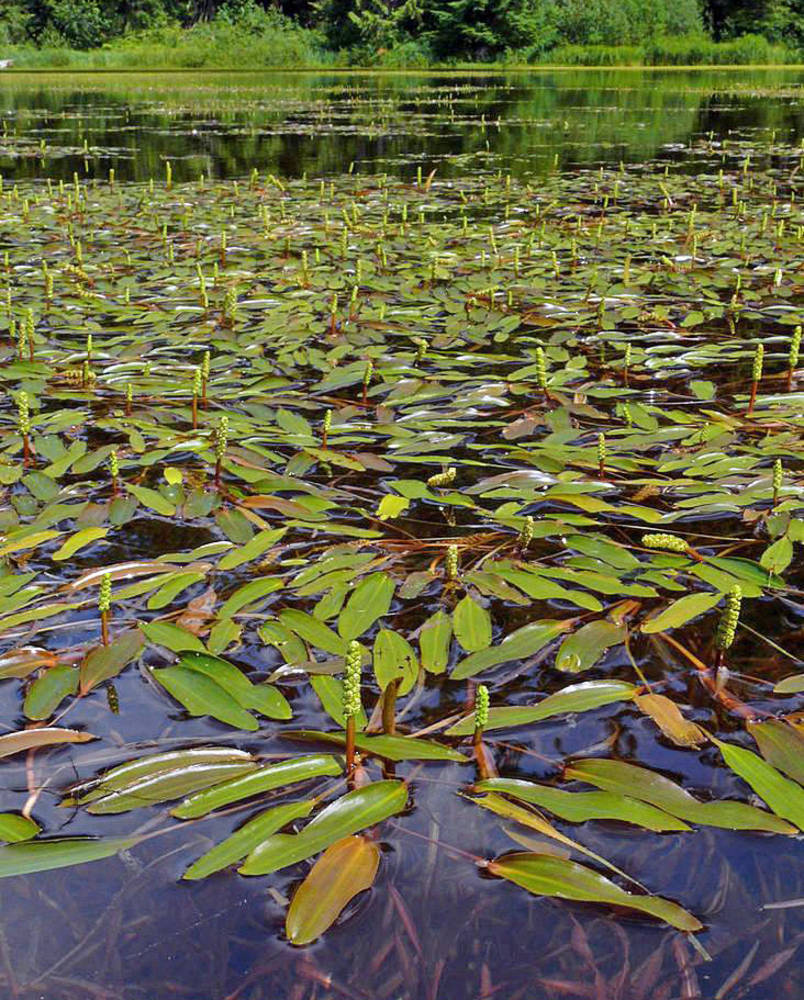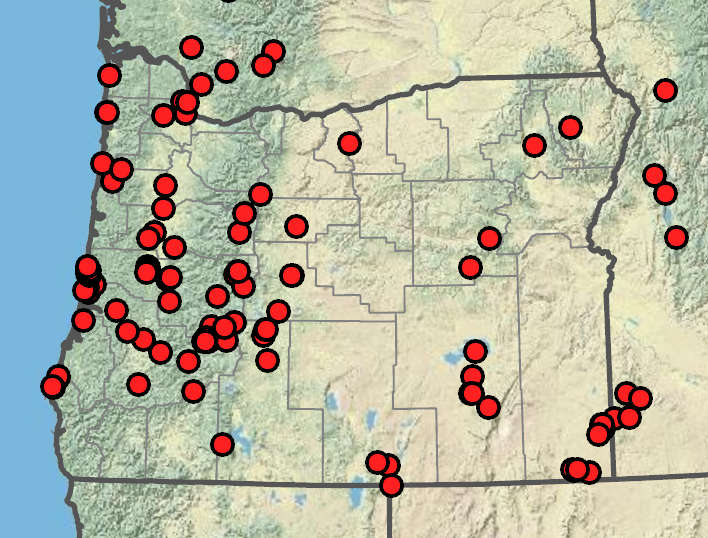Potamogeton epihydrus
ribbon-leaf pondweed, ribbon-leaved pondweed
flattened, 10–90 cm; nodal glands absent.
submersed and floating or submersed only.
narrowly oblanceolate to elliptic, 20–80 × 4–20 mm;
base acute;
tip rounded or bluntly cuspidate;
veins 11–41;
petioles 20–125 mm.
sessile, attached to stem nodes, not attached to stipules;
stipules 10–30 mm;
tip obtuse;
blades linear, 50–220 × 1–10 mm;
margins entire;
tip blunt to acute; lacunae forming a prominent band along the midvein;
veins 3–13.
emersed;
spikes cylindric, 8–40 mm;
peduncles axillary; erect, 15–50(160)mm.
sessile; round to obovoid, flattened, dorsally and laterally keeled, 2.5–4.5 × 2–3.6 mm; greenish brown;
beaks erect, 0.5 mm.
Potamogeton epihydrus
Still or flowing waters of lakes, ponds and streams. 0–2000m. All ecoregions except Col. CA, ID, WA; north to AK, east to Newfoundland, southeast to FL; Europe. Native.
Potamogeton epihydrus is distinguished by submersed linear leaves with a prominent band of lacunae along the midvein. This species hybridizes with P. gramineus and P. nodosus.
Nick Otting, Richard Brainerd, Barbara Wilson
- Local floras:
BC,
CA,
OR,
WA
- Local Web sites:
CalFlora,
CalPhotos,
Flora NW,
PNW Herbaria
WildflowerSearch
iNaturalist (observations)
USDA Plants Database
- LBJ Wildflower Center
- SEINet
- Plants of the World Online
- Encyclopedia of Life
- Wikipedia
- Google Image Search



